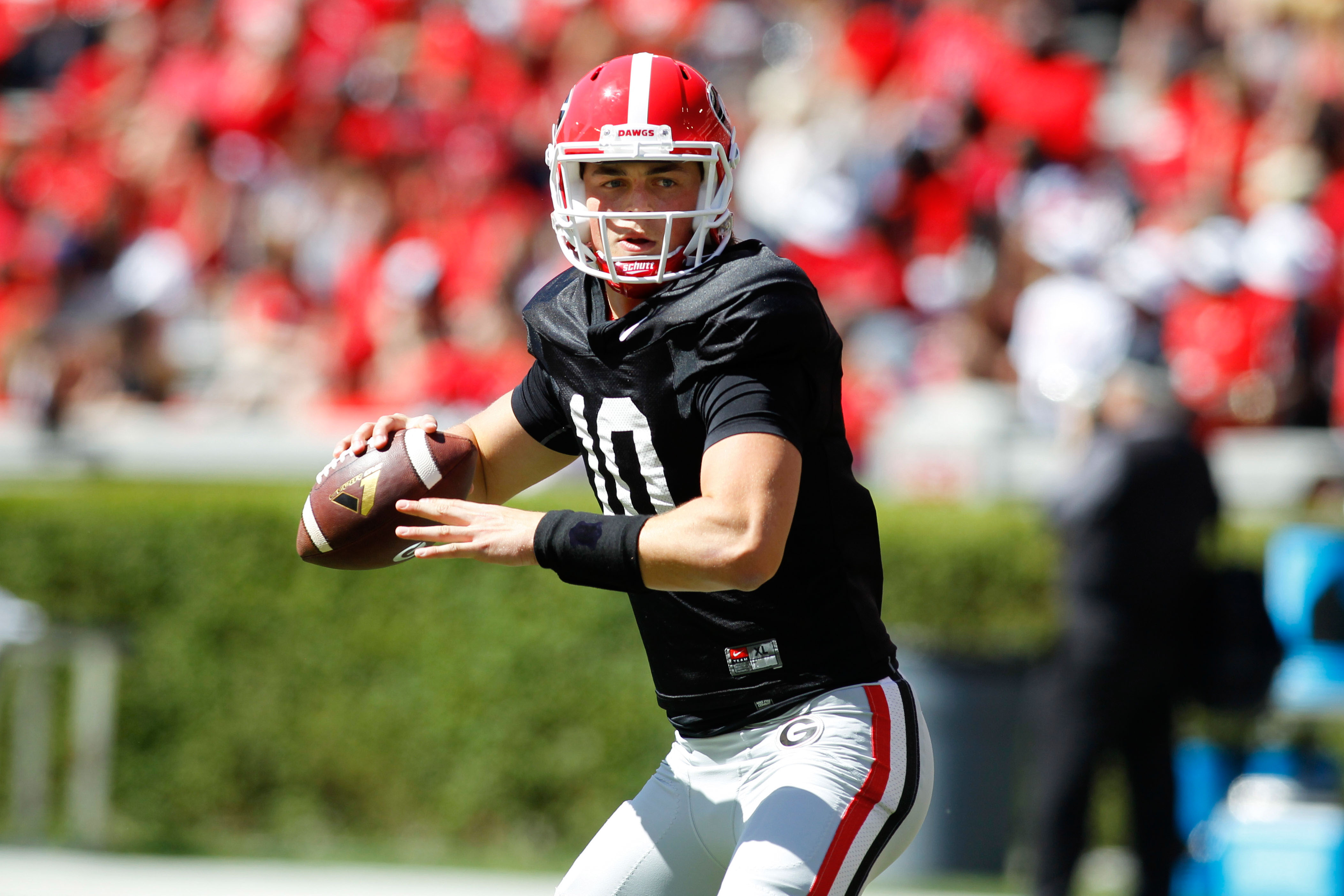
Until actual games start, August is a good time for SEC fans to think about the future of their favorite teams.
Which teams are building quality depth through strong recruiting classes? Which coaches are on the hot seat? Can teams like Vanderbilt or South Carolina post winning records in the next few years, or will they be outdone by the East’s perennial powers?
With that in mind, let’s try to pick the peak season for SEC East programs within a six-year window covering the 2013-2018 seasons:
Florida: 2015
Surpassing the final two years of the Will Muschamp era was pretty easy for coach Jim McElwain, who guided the Gators to a 10-4 record and a SEC East crown in his debut season in 2015.
Outdoing himself in the next few seasons will be more of a challenge. Last year’s team was powered by a suffocating defense full of NFL talent that held opponents to just more than 18 points per game.
The questions at quarterback are still there, and the defense will need new stars to emerge — particularly in the front seven. The Gators aren’t going away in terms of competing for division titles, but it will be hard to top 2015’s win total.
Georgia: 2018
There’s plenty of excitement in Athens with new coach Kirby Smart, a formidable running game and the addition of five-star quarterback recruit Jacob Eason.
There’s no question the Bulldogs will be contenders in the SEC East for the foreseeable future, and Eason’s junior season will give them the best chance to match their dominance of 2014.
That team went 10-3 and outscored opponents at about a 41-20 clip. Hutson Mason tossed 21 touchdowns against just four interceptions and Nick Chubb and Todd Gurley combined for more than 2,400 yards and 23 touchdowns on the ground.
That team was loaded. But Eason’s upside is considerably higher than Mason’s, and Eason could be entering his junior year as a potential No. 1 overall NFL Draft prospect.
Smart was hired because 9, 10 wins no longer were enough.
He’s already is making an impact in recruiting, and by 2018, his defense, which takes time to learn and recruit for, should be rocking as well.
Kentucky: 2017
With 2-10, 5-7 and 5-7 marks for the past three seasons, there’s really nowhere for the Wildcats to go but up in this exercise.
Even with an relatively inexperienced quarterback in Drew Barker, this could be the year Mark Stoops’ team returns to a bowl game.

Stanley Williams leads a host of talented running backs, and he’s one of nine returning starters on offense. The defense, while far less experienced, has talent and Stoops and his staff have done a decent job restocking the roster on the recruiting trail recently. Adding proven transfers helps, too.
A 6-6 mark and bowl bid seem like reasonable goals in 2016, and with Barker and several playmakers on both sides slated to return, 2017 should be even better.
Missouri: 2013
Barry Odom is beginning his tenure as head coach this season. He’s replacing one of the most successful coaches in school history, Gary Pinkel.
Pinkel’s 2013 squad finished 12-2, winning the SEC East and knocking off Oklahoma State in the Cotton Bowl in the Tigers’ second year in the SEC. The only blemishes were a three-point loss to South Carolina and a loss against Auburn in the SEC Championship Game.
Faced with rebuilding one of the nation’s most anemic offenses this season, it’s hard to see any 12-win campaigns on the immediate horizon at Mizzou.
South Carolina: 2013
Will Muschamp is the man charged with leading the Gamecocks out of the Steve Spurrier era. Needless to say, it’s a tall task.
Spurrier led South Carolina to unprecedented heights.
His 2013 team finished 11-2 and ranked No. 4 — the program’s highest year-end ranking. They beat two top-10 teams (Missouri and Clemson) and beat Wisconsin by double digits in the Capital One Bowl.
While there’s reason for optimism after last year’s 3-9 disaster, it will be awhile before the team tops an 11-win campaign.
Tennessee: 2016
Butch Jones’ teams have improved by two wins a season since 2013’s 5-7 mark — and all signs point to a similar jump for the 2016 season.
There are nine returning starters on offense and eight more on defense, and just about every star will depart after this season, some early for the NFL.

Joshua Dobbs isn’t merely the East’s most experienced quarterback, he’s by far the division’s best. Jalen Hurd is a Heisman candidate. Alvin Kamara would be a starter at most programs.
The defense features pass rushing threats up front, and enough play makers in the secondary to convert poor passes into turnovers.
The Volunteers are a consensus pick to win the East this year, and some are touting them as dark horse playoff candidates as well. Anything less than a double-digit win season and an appearance in the SEC Championship Game will be a huge disappointment.
Vanderbilt: 2013
Coach Derek Mason is quietly confident that he can return the Commodores to a bowl game for the first time since 2013.
That’s not outside the realm of possibility, assuming that the offense can raise its game to the defense’s level. But topping the overall success of that 2013 squad might be a bridge too long.
That season, Vanderbilt finished 9-4, with two of its losses (South Carolina and Missouri) coming against teams ranked in the top 5.
At the end of the season, the Commodores thumped Houston, 41-24, in the Compass Bowl to wrap up the James Franklin era in Nashville.
Randy Capps is a contributing writer for Saturday Down South. He covers SEC football, South Carolina and Georgia.







